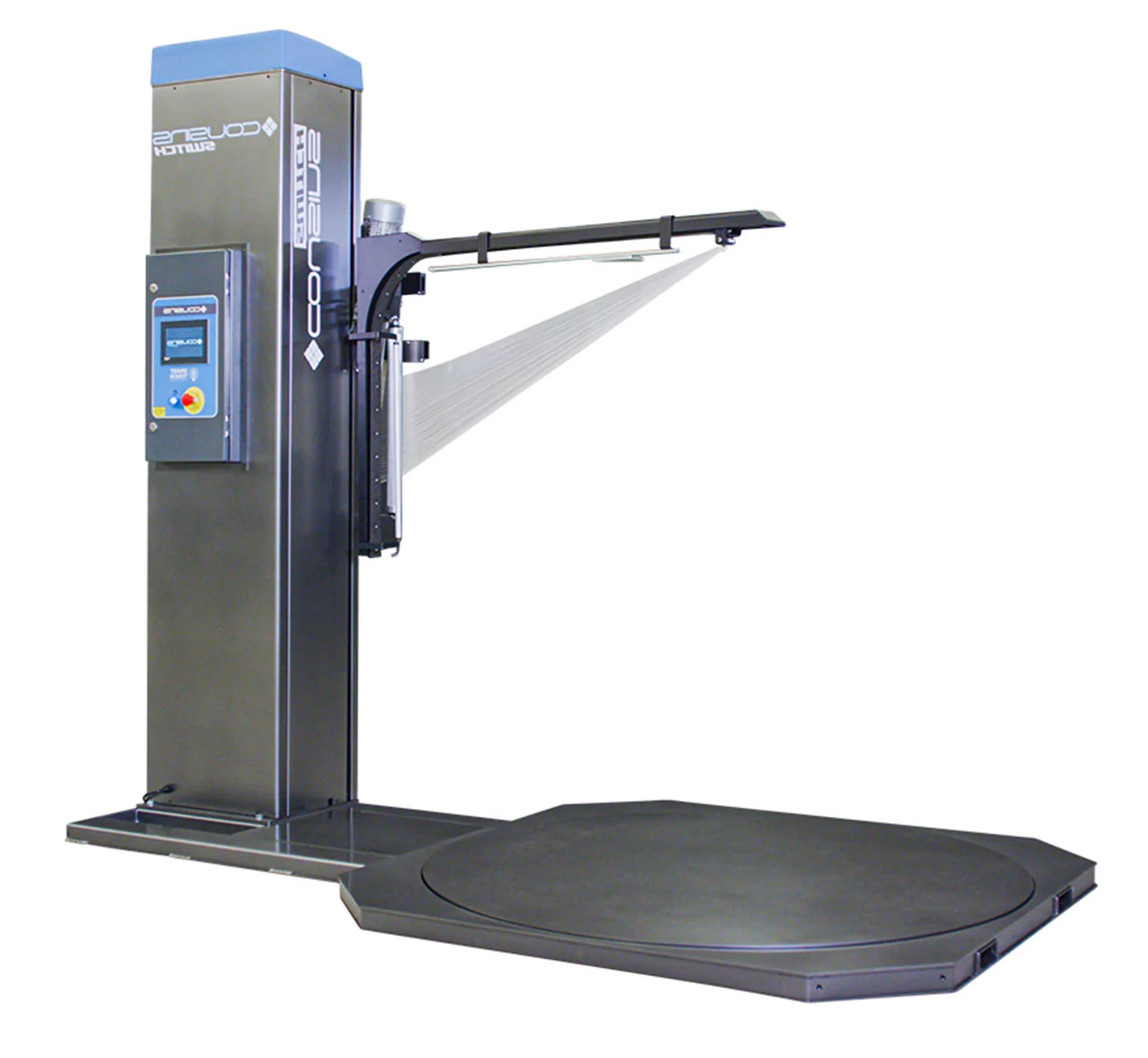Comprehending the Secret Perks of Routine Maintenance for Your Pallet wrapping Device
Routine upkeep of pallet wrapping equipments is essential for peak efficiency. It assures performance and lessens the possibilities of unforeseen downtime. Routine checks likewise add to a much safer working environment for operators. In addition, regular maintenance can result in significant cost savings with time. Understanding these advantages can change how companies approach equipment treatment. Nonetheless, what certain methods can maximize these benefits?
Enhanced Machine Efficiency and Performance
When routine maintenance is focused on, the performance and efficiency of a pallet wrapping equipment considerably enhance. Regular maintenance guarantees that all parts work at their best, minimizing the probability of friction and use that can lead to inadequacies. Frequently checking and adjusting setups, such as tension and rate, enables the equipment to operate at its optimal, adding to smoother wrapping procedures. Furthermore, keeping the high quality of the films used and keeping the equipment clean stops unneeded stress, allowing it to cover pallets faster and with greater consistency. This boosted efficiency not only increases efficiency but likewise ensures that products are made use of effectively, inevitably bring about lower functional costs and better result top quality. Normal upkeep consequently plays a crucial role in maximizing the maker's potential.
Decreased Threat of Unexpected Malfunctions

Prolonged Devices Lifespan
Longevity is a crucial advantage of preserving pallet wrapping makers, as consistent upkeep straight adds to an extended equipment lifespan. Regular upkeep regimens, including assessments, lubrication, and components substitute, guarantee that machines run effectively and successfully. By resolving wear and tear prior to it escalates into larger concerns, drivers can significantly decrease the likelihood of significant repairs that could cause expensive downtime. In addition, well-maintained equipments are less prone to breakdowns, enabling smoother procedures and longevity in service. This aggressive strategy not visite site only preserves the devices's functionality but additionally improves its efficiency over time. Eventually, buying routine upkeep equates to a much more reliable pallet wrapping maker, expanding its beneficial life and giving much better roi for organizations.
Boosted Safety And Security for Operators
Preserving pallet wrapping equipments not only prolongs their life expectancy however additionally considerably enhances safety and security for operators. Normal maintenance assurances that all parts work smoothly, minimizing the danger of malfunctions that might bring about crashes. By inspecting belts, equipments, and safety features, drivers can stay clear of prospective dangers triggered by used or damaged components. Furthermore, a well-kept device lessens the chance of unexpected stops or jerky activities, which can trigger injuries during operation. When safety guards and emergency shut-off systems are on a regular basis inspected and serviced, Operators are better shielded. Eventually, prioritizing upkeep contributes to a safer working atmosphere, permitting drivers to do their tasks with confidence and significantly lowering the danger of office mishaps associated to devices failure.

Expense Savings Via Preventative Upkeep
While unexpected malfunctions can lead to substantial expenditures, applying a routine for preventative upkeep can substantially lower overall costs related to pallet wrapping equipments. Normal evaluations and prompt repair work assist identify possible issues prior to they intensify, lessening downtime and costly emergency situation fixes. By dealing with wear and tear proactively, businesses can prolong the lifespan of their devices, delaying the need for costly substitutes. Additionally, well-maintained makers run much more successfully, which can cause lower energy consumption and reduced material waste. These financial savings accumulate with time, making anchor preventative upkeep an economically sound strategy (pallet wrapping machine repair). Eventually, buying routine upkeep not only safeguards functional effectiveness however additionally adds to a healthier profits, profiting business over time
Frequently Asked Inquiries
Exactly how Often Should I Schedule Upkeep for My Pallet wrapping Maker?
The regularity of maintenance for a pallet wrapping equipment typically relies on usage strength. Normal checks every 3 to 6 months are a good idea to ensure peak performance, lengthening the maker's lifespan and lessening unanticipated break downs.
What Certain Parts Require Normal Inspection During Maintenance?
During maintenance, specific components calling for regular assessment include the wrapping film dispenser, tension control drive, motor and system elements, electrical links, and safety functions. Making certain these components are operating at their finest prevents malfunctions and boosts total machine performance.
Can I Execute Upkeep Myself or Should I Work with a Service technician?
The choice to perform upkeep directly or work with a technician depends on one's technological skill and comfort level. While some might manage fundamental tasks, complicated concerns commonly require professional proficiency for optimal safety and performance.
What Indicators Indicate That My Pallet wrapping Equipment Demands Maintenance?
Indications suggesting a demand for maintenance include uncommon sounds, inconsistent wrapping stress, frequent mistakes, noticeable wear on go to this web-site parts, and decreased operational rate. Addressing these signs immediately can avoid further damage and assurance peak efficiency.
Where Can I Find Replacement Components for My Pallet wrapping Maker?
To locate replacement components for a pallet wrapping machine, one could discover producer websites, specialized commercial supply shops, or online marketplaces (pallet wrapping machine repair). Additionally, calling the producer's customer solution might give details guidance on component schedule and sourcing
